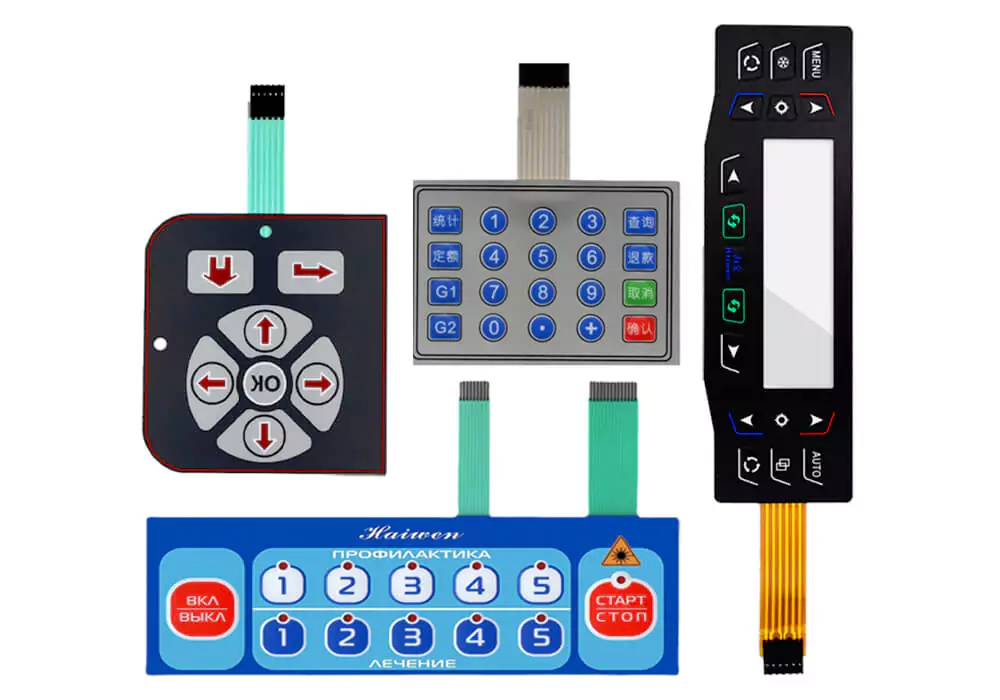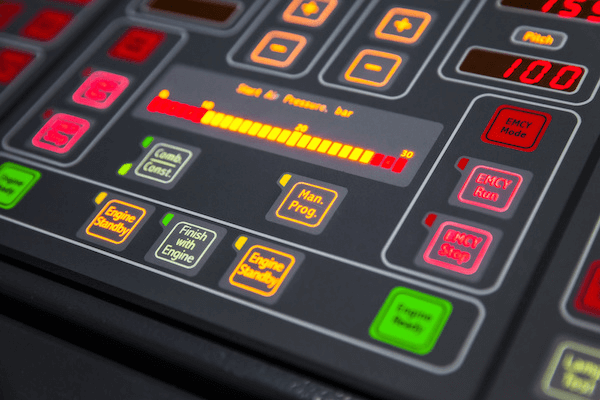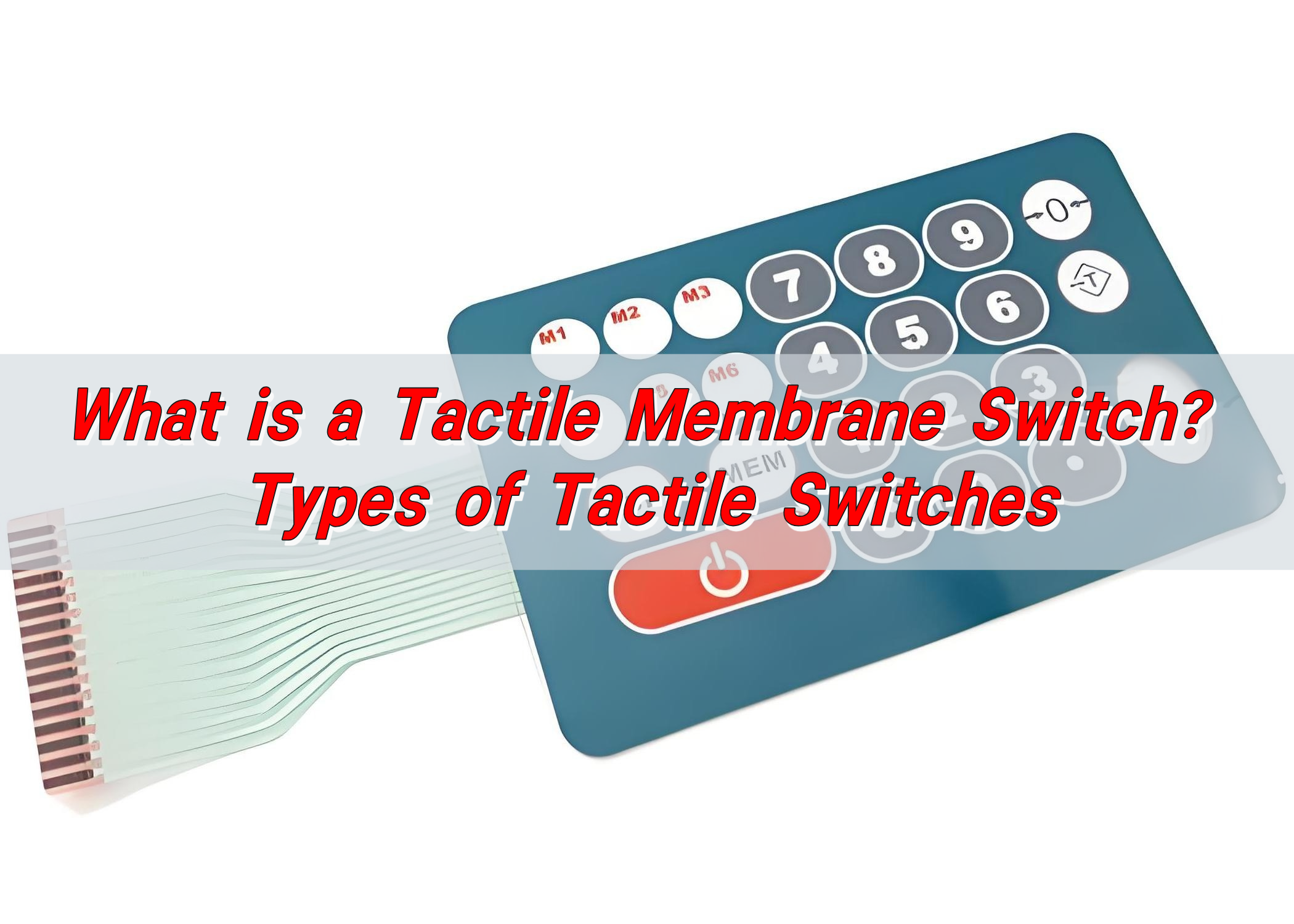The Manufacturing Refine Behind Membrane Switch Over: What You Need to Know
The manufacturing procedure behind membrane changes combines careful layout, material option, and quality assurance. It starts with understanding the details of membrane button design and proceeds through different stages, including product choices and printing strategies. Each phase plays an essential function in ensuring performance and durability. The complexities of layer building and construction and the rigorous testing requirements might reveal insights that are not promptly noticeable. What lies beyond these fundamental components?
Understanding Membrane Change Style
Membrane switches may appear basic at initial look, their layout entails intricate considerations that guarantee functionality and sturdiness. The style process begins with a complete understanding of customer needs, consisting of the user interface's designated application and ecological aspects. Functional designs is a crucial element, as the design needs to help with simplicity of use while ensuring that tactile responses satisfies customer expectations.Moreover, the layering of parts, such as visuals overlays, sticky layers, and conductive traces, need to be exactly engineered. membrane switch. This split arrangement not just influences the switch's responsiveness yet additionally affects its durability. Attention is provided to the securing methods employed to protect versus wetness and dust, which could endanger performance. Additionally, layout factors to consider reach looks, where shade systems and aesthetic clarity boost customer experience. Inevitably, the layout of membrane layer changes equilibriums capability, user experience, and toughness, making sure that they satisfy the demands of numerous applications efficiently
Materials Utilized in Membrane Switch Over Manufacturing
When picking materials for membrane layer switch production, it is important to contemplate both efficiency and resilience. The key materials consist of polyester and polycarbonate films, which supply flexibility and toughness. These films are commonly coated with sticky to guarantee appropriate bonding to substratums. Conductive inks, generally made up of silver or carbon, are crucial for developing electrical connections within the button, allowing for trustworthy operation.Additionally, a protective layer, such as a difficult layer, is frequently put on boost scratch resistance and durability. The selection of backing material, such as acrylic or foam, can significantly influence the button's tactile feel and total customer experience. Different ecological variables, including temperature and humidity, ought to assist product option to assure peak performance in specific applications. Eventually, the ideal mix of products adds to the membrane layer button's functionality and lifespan, making informed choices vital for makers.
The Printing Refine: Creating Video and Text
The printing process in membrane switch manufacturing plays a considerable function in creating top notch graphics and message. Different graphic style methods are utilized to guarantee visual appeal and functionality, while mindful ink option approaches are crucial for durability and efficiency. Recognizing these components is essential for accomplishing finest lead to membrane layer button layout.
Graphic Design Techniques
Graphic style techniques play a necessary function in the printing process of membrane layer buttons, as they specify exactly how graphics and text will eventually show up on the final product. Reliable graphic layout includes the tactical usage of colors, fonts, and designs to enhance readability and aesthetic appeal. Developers frequently make use of vector graphics for scalability, guaranteeing that photos stay sharp at numerous sizes. In addition, attention to contrast and placement is important, as it affects user communication and visual quality. The unification of branding elements, such as logos, have to be handled with care to keep brand stability. On the whole, thoughtful graphic style strategies add considerably to the performance and good looks of membrane switches, affecting customer experience and product performance.
Ink Choice Approaches
Picking the suitable ink is necessary for attaining the desired visual high quality and toughness in membrane layer switch production. Various ink types are used, consisting of solvent-based, water-based, and UV-curable inks. Each kind offers distinct features, such as adhesion, flexibility, and resistance to ecological variables. Solvent-based inks are usually favored for their durability and vibrant colors, while water-based inks are more eco friendly but may have limitations in adhesion. UV-curable inks provide quick treating and durable efficiency. Furthermore, color matching methods ensure that the chosen inks align with design requirements. Inevitably, the selection of ink need to think about elements such as application method, substratum compatibility, and end-use needs to accomplish exceptional cause membrane layer button graphics and text.
Layer Construction and Setting Up

Material Selection Process
A careful choice of materials is necessary in the production procedure of membrane layer buttons, as it straight affects capability and durability. The primary materials used include polyester, polycarbonate, and various conductive inks. Polyester is frequently favored for its outstanding resistance to chemicals and abrasion, making it appropriate for severe atmospheres. Polycarbonate, on the other hand, gives premium clearness and effect resistance, which is useful for applications needing visibility and robustness. Conductive inks, typically made up of silver or carbon, are essential for producing reputable electrical paths. In addition, the option of glue products affects the overall integrity of the switch - membrane switch. Evaluating variables such as ecological exposure, tactile responses, and visual requirements guides suppliers in choosing the most effective materials for their details applications
Layer Bond Techniques
Sticking layers in membrane switch building and construction is a crucial process that assures performance and durability. Numerous bond techniques are used to protect ideal bonding in check over here between layers, which usually consist of the usage of adhesives, heat, and stress. Pressure-sensitive adhesives (PSAs) are typically made use of for their simplicity of application and prompt bonding abilities. In addition, thermal bonding methods can be used, where warm is made use of to trigger glue properties, protecting a solid bond. The option of attachment method mainly depends on the products involved and the specific application demands of the membrane layer switch. Appropriate alignment and uniform application of adhesives are necessary to avoid issues, securing the button runs effectively throughout its designated life-span.
Quality Control Steps
Assuring quality control during the layer building and setting up of membrane switches is vital for keeping efficiency and reliability. This process normally entails several vital procedures, consisting of thorough evaluations at each stage of manufacturing. Suppliers make use of sophisticated screening methods, such as peel examinations and adhesion evaluations, to validate the integrity of layer bonds. In addition, visual inspections are conducted to identify any flaws in printing or product incongruities. Ecological conditions, such as temperature and moisture, are thoroughly kept an eye on to guarantee optimal curing and bond. Routine calibration of equipment assists preserve specific production requirements. By executing these quality assurance measures, producers can significantly reduce the danger of product failure, assuring that the last membrane layer changes fulfill the required specifications and consumer expectations.
Evaluating and Top Quality Control Steps

Innovations in Membrane Switch Over Modern Technology
As developments in modern technology remain to advance, membrane switches are profiting from cutting-edge advancements that enhance their capability and customer experience. One noteworthy development is the assimilation of capacitive touch modern technology, which permits more instinctive and responsive interface. This shift not just boosts aesthetics yet likewise decreases mechanical deterioration, extending the life-span of the switches.Additionally, developments in graphic overlay products have led to boosted sturdiness and resistance to ecological variables such as moisture and UV light. These products now supply enhanced clarity and illumination, further raising the visual appeal.Furthermore, the incorporation of clever modern technology is Website transforming membrane changes right into interactive control board, making it possible for connection with IoT gadgets. This connection promotes a smooth user experience, leading the way for applications in numerous industries, from health care to customer electronics. Collectively, these innovations setting membrane layer changes as essential components in contemporary tool design.
Frequently Asked Questions
For how long Does the Membrane Switch Manufacturing Refine Take?
The period of the membrane layer button manufacturing process can vary significantly. Factors such as complexity, products utilized, and production quantity impact timelines, with typical manufacturing ranging from a couple of days to numerous weeks for completion.
What Are the Typical Applications for Membrane Layer Buttons?
Membrane buttons are typically used in various markets, consisting of vehicle controls, family appliances, medical tools, and consumer electronic devices (membrane switch). Their adaptability and sturdiness make them ideal for applications calling for user-friendly interfaces and reputable efficiency in varied environments
Can Membrane Switches Be Custom-made for Certain Requirements?

What Is the Lifespan of a Normal Membrane Change?
The life-span of a regular membrane switch varies, but usually, it ranges from 1 to 5 million cycles. Factors such as usage, setting, and material top quality considerably influence toughness and overall efficiency over time.

Are Membrane Layer Switches Over Eco Friendly?
The ecological kindness of membrane layer switches varies. Some materials used might not be recyclable, while others can be environment-friendly. The general effect depends on making techniques and materials, requiring mindful consideration during choice and disposal. The manufacturing process behind membrane layer switches combines cautious style, product choice, and top quality control. It begins with comprehending the details of membrane switch style and progresses through numerous phases, including product options and printing techniques. When selecting materials for membrane layer switch manufacturing, it is crucial to consider both performance and resilience. A mindful selection of materials is crucial in the manufacturing process of membrane layer buttons, as it directly influences functionality and sturdiness. The choice of adhesion method largely depends on the materials included and the specific application demands of the membrane button.